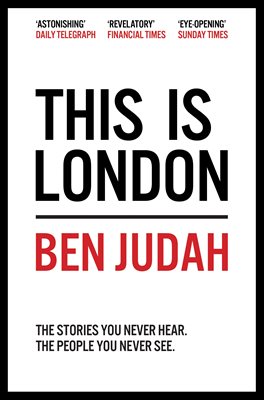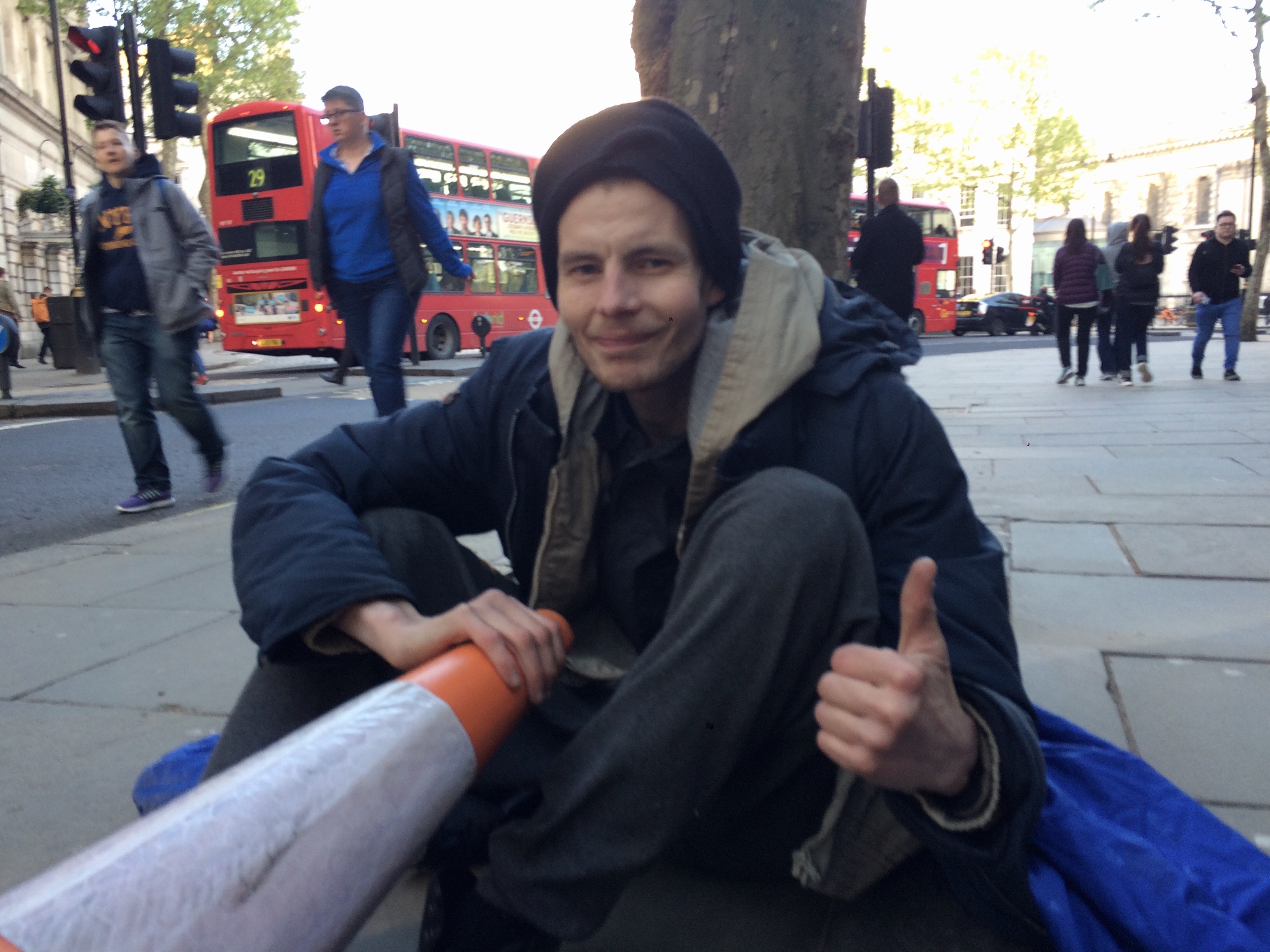MAKING AND CURATING
RESEARCH
THE PROJECT
Do Artefacts Have Politics? By Langdon Winner
I read a chapter from the book Modern Technology: Problem or Opportunity? (Winter, 1980). In this extract Winner contemplates whether technologies have political power by themselves or if human interference gives them this power. He cites Lewis Mumford, a 20th century historian and philosopher of technology, who argue that two types of technologies exist. These are those that are authoritarian and those that are democratic. Winner argues that most technologies are at first seen as being democratic, like the television which Daniel J. Boorstin argued had the power to “disband armies.” However, he argues authorities influence the technologies. For instance, when Robert Moses blocked the trains and buses from entering Jones Beach, a park he wanted to keep blacks and the working class away from. Most interesting is the idea that technology has political power in of itself. Engels argued that “the automatic machinery of a big factory is much more despotic than the small capitalists who employ workers ever have been.” He believed authority was needed, however. Plato used the analogy of a ship needing to be steered and organised by its captain. The notion of the technology and the need for resources dictating people is very interesting.
The power of display by Mary Anne Staniszewski
Staniszewski goes into detail on the significant changes undergone in exhibiting art in the 20th century. She talks about Alfred Barr, who installed the first exhibition at the Museum of Modern Art. Before him pictures were hung according to size and shape for symmetry, often on walls rich in colour. He instead isolated individual works and put them at eye level, with natural coloured monk cloth-lined walls. He also added information on the artists, and thus the exhibition became educational and intellectual rather than purely aesthetic. These innovations have had a huge impact on curatorial practice. I had never questioned the typical gallery’s layout, and this opened my mind to alternative methods of exhibiting art.
What is contemporary curatorial thought? By Terry Smith
Smith looks at theories by Staniszewski, particularly her questioning of a role called “the curatorial”. She is referring to a “multidimensional role that includes critique, editing, education and fundraising.” Maria Lind outlines the difference between “business as usual” curating and “the curatorial”, stating: “the curatorial goes further, implying a methodology that takes art as its starting point, but then situates it in relation to specific contexts, times and questions in order to challenge the status quo.” The thought process behind this method of curatorial practice shows how as well as the art itself, the curation is expressing something artistic and pertinent.
This is London by Ben Judah
I read a book called This is London. It is a journalistic account of London in the present day, through the eyes of its minorities and immigrants. Judah interviews and intermingles with his subjects first hand, even sleeping rough to gain a better understanding. As he says on the first page: “I have to see everything for myself. I don’t trust statistics.” He even adapts his writing style in his prose, depending on the character of the person he is spending time with. I loved the subjective account of the lives of these people. He is not arguing anything in an academic essay, rather telling what he perceives to be a more relevant truth. He goes into detail on the lives of Romanians, some of the biggest
sufferers in London at the moment.
This is due partly to
how recently a lot of them migrated.
This is a community that I want to
explore in my research and
development of my final project.
He also featured on a "vice"
documentary exploring the subject.

William Klein
I have recently discovered street photography, a particularly popular medium in New York City. I stumbled upon a photographer named Daniel Arnold, who gained a huge following on Instagram with his style of photographing real people in the city. His style is relatively non-aesthetic, compared to professionals such as landscape photographers. I discovered that he is part of a long lineage of New York-based street photographers, starting partly with a man named William Klein. Klein photographed New York during the 1950s, and published a book with his pictures and writings. The writing is a poetic and subjective account of life in New York during the time. I watched a documentary made by the BBC and was instantly inspired, particularly in moments where the pictures run with jazz music in the background and a voice over of the writing. This is where I got my initial inspiration for the project.
My interest in photography
I have taken my own street photographs on my Canon 1300d. I often go to central London to take these pictures and walk in any direction until I find something interesting. Its usually some sort of juxtaposition like someone being somewhere unlikely or its about the story, colour or composition. My aim isn’t to take beautiful pictures but ones that say something while still having some aesthetic merit.
There are several difficulties that I’m faced with when taking these pictures. Sometimes it’s a missed opportunity or the photo does not do justice to the reality. Another problem is that sometimes I don’t have the confidence to take a picture when it is invading someone’s privacy. These are obstacles I am trying to overcome.
Here are a few photographers on Instagram that have influenced me:
https://www.instagram.com/arnold_daniel/
https://www.instagram.com/troyholden/
https://www.instagram.com/bruce_gilden/
https://www.instagram.com/noelcamardo/
https://www.instagram.com/chrisvossnyc/
https://www.instagram.com/boldrini/
DECLAN O'REILLY
CLICK HERE TO SEE PHOTOS I HAVE TAKEN
Initial Idea
My initial idea was to make a short film presenting photographs compiled from different archives. The film was to exhibit the pictures in chronological order to show the evolution of London or a more specific area over time. Over the photos was to be a voice over written by me giving a subjective narration about London. I wanted the narration to be personal, not overtly factual like a documentary. However, I ran into problems with finding pictures. In the photographic archives I looked at, most pictures had to be bought or else they would have a watermark. The variety of pictures was also limited, and few were what I was looking for: street-photography-style pictures of every day life. So, my idea changed. I decided instead to use what I had learned looking at the archives to make a point about representation and perspectives.
Final Idea
I was thinking about how certain people are underrepresented in photographic archives, and the photography of people like William Klein. The aesthetic of his pictures gives a sense that the viewer is on those streets and his early work serves as an archive for 1950s New York. I want to do a similar thing in London, as shown in my own photography. But for this project I decided to give a voice to someone who wouldn’t usually get the chance to express themselves. So, I decided to give a camera to a homeless person. The camera would have to be disposable, as there was a chance whoever I gave it to would not come back. I also needed to give them an incentive, so I decided offering payment if they could meet me the next day with all the photographs taken. My goal was to give the person a voice, and art is an arena commonly associated with bourgeois intellectuals. I watched The Square (Östlund, 2017), a film about a contemporary art curator who is displaying a new piece. This piece is called The Square, a square on the floor made of lights which within, everyone must be treated equally. The film laughs at the contradiction between the curator’s proclaimed principles and how he actually acts towards people who are less fortunate. For this project I didn’t want the work to be as contradictory as The Square.
What happened?
I found Jamie near Trafalgar Square, outside the National Portrait Gallery café entrance. When I saw him, he was shouting through a cone, which is how he busks. I told him about the project, and that I was looking for him to try to express his own views on the city. I told him to be as honest as he could and as explicit as he’d like. The next day he eventually showed up, and I printed the pictures. At first, I was unhappy with the photographs, as Jamie obviously isn’t William Klein. But then I realised he had done exactly what I needed: taken the photos. If he had taken 27 pictures of his shoes I would have exhibited them, because that says just as much (if not more) than if the photographs had been beautiful. This is because it still said something. This piece is about ideas and stories rather than aesthetics. I felt a sense of guilt as I was using Jamie for my own gain. But likewise, he was doing the same with me. In life it seems that many interactions are made for selfish reasons. People want things from each other, sometimes its company, sometimes money or favours. This is what the art would have said if Jamie hadn’t fully complied. But he did. Now the art says: although we profited from each other and were motivated by that, look at what we can create working together. This made me decide that for this work to be as authentic as possible I would need to present every picture he took. I decided to enlarge the ones that I thought had the most artistic merit; this also would make the presentation of the photos more interesting. I also decided to exhibit the camera he used and a photograph of him where we met.

Conclusion
I am happy with the final project and the statement it makes. Of course, I could have tried with more people, but the amount of money spent would have been too significant as I had to buy the camera, prints and pay Jamie. I think archives are an interesting thing to study and that preserving the past is very important. I want to contribute to the work archives do with my work, by trying to freeze and preserve and, through this, understand my experiences.
My Artist Statement
Perceiving Perspectives
I am intrigued by how many disparate perspectives there are within one city. Looking through photographic archives in preparation for this project, I noticed how events represented are usually ones deemed significant. But by whom? Too often I found pictures of the Queen, politicians, celebrities, or anyone considered to be “someone”. So, I decided to make a piece for the “nobodies”. That is how I met Jamie.
I found Jamie at Trafalgar Square, next to the National Portrait Gallery café entrance. He is 25, from High Barnet, and has been homeless for two years. Unable to do much else, he busks by shouting through a traffic cone. I gave him a disposable camera and offered payment if he could meet me at the same place the next day with all the pictures taken. The next day he was twenty minutes late. Waiting at his spot from 24 hours before, I got a tiny taste of the monotony of living on the streets. Jamie has been waiting a lot longer.
These are the pictures that he took, in chronological order (left to right).
The photographer in me was looking for pleasing aesthetics or more personal pictures. However, instead of making the project about my own judgements concerning what makes a good photograph, I decided to present every one that he took. My hope is that in exploring different perspectives, we can become more perceptive.